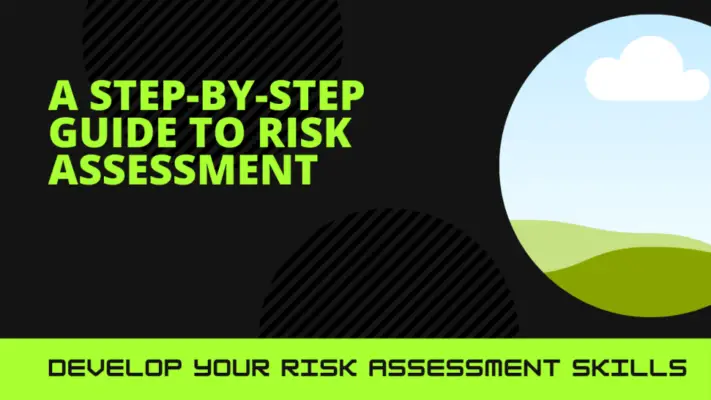Falls risk assessment is a component of patient care that aims to identify individuals at a higher risk of experiencing falls. This comprehensive evaluation assesses various factors contributing to fall incidents, allowing healthcare professionals to develop targeted preventive measures and interventions.
Implementing fall risk assessments, healthcare providers can effectively reduce the occurrence of falls, consequently improving patient safety.
During a fall risk assessment, multiple factors are considered. These include the individual’s medical history, current health status, cognitive abilities, mobility limitations, medication usage, and environmental hazards.
Through an analytical approach, healthcare professionals gather detailed information about these factors to determine an individual’s level of vulnerability accurately.
Implementing preventive measures and interventions based on the findings of the fall risk assessment is crucial in minimizing fall risks. This may involve environmental modifications such as removing obstacles or installing handrails.
Providing assistive devices like walkers or grab bars, prescribing appropriate medications, and developing personalized exercise programs.
A collaborative approach between healthcare professionals and patients is essential for successful fall risk assessments. This involves effective communication and shared decision-making to appropriately gather and utilize all relevant information.
Doing fall risk assessments helps identify those at higher risk of falls and allows for specific prevention measures. Collaboration between healthcare professionals and patients provides useful information for reducing fall incidents.

Importance of Falls Risk Assessment in Patient Care
The importance of fall risk assessment in patient care lies in its ability to identify individuals at a heightened risk for falling, enabling healthcare professionals to implement preventive measures and interventions to reduce falls and associated complications.
Falls are a significant problem in healthcare settings, leading to increased morbidity, mortality, and healthcare costs.
Healthcare providers can conduct fall risk assessments to identify patients with a higher risk of falling due to age, comorbidities, medications, and mobility impairments. This information allows for targeted interventions tailored to each patient’s specific needs.
Implementing preventive measures like exercise programs, environmental modifications, medication reviews, and assistive devices can significantly reduce the likelihood of falls.
In the end, taking a comprehensive approach helps improve the outcomes of patients by lessening fall-related injuries and hospitalizations.
This also reduces the financial burden on the healthcare system by minimizing costly fall-related treatments.
Factors Considered in Falls Risk Assessment
In fall risk assessment, several factors are considered to determine the likelihood of a patient experiencing a fall. These factors include age and frailty, history of falls, medications, and medical conditions.
Age and frailty play a significant role as older adults and those with decreased physical strength have an increased risk of falling.
Additionally, a history of falls is crucial in assessing the likelihood of future falls, as individuals who have fallen before are more likely to fall again.
Medications and medical conditions also contribute to fall risk assessment, as certain medications can cause dizziness or impaired balance. In contrast, specific medical conditions may affect mobility or increase the risk of orthostatic hypotension.
Overall, considering these factors allows healthcare professionals to accurately assess the risk of falls in patients and implement appropriate preventive measures.
Age and Frailty
Age and frailty are significant factors to consider when assessing the risk of falls. Age-related factors are crucial in determining an individual’s susceptibility to falling.
As people age, physiological changes occur in their bodies, such as decreased muscle strength, impaired balance, and reduced sensory perception. These changes increase the likelihood of falls and subsequent injuries.
Frailty assessment is another important aspect to consider in fall risk assessment. Frailty is a state of increased vulnerability due to age-related declines in various physiological systems, including mobility, cognition, nutrition, and overall health status.
Assessing frailty helps identify individuals at higher risk for falls due to decreased physical resilience and functional capacity.
Considering age-related factors and frailty assessment, healthcare professionals can better understand an individual’s fall risk profile and develop appropriate interventions to prevent future falls.
History of Falls
A comprehensive understanding of an individual’s falls history provides valuable insights into their potential vulnerability to future incidents.
Healthcare professionals can assess the risk of falls by examining previous incidents, including their frequency, circumstances, and consequences. This information can be used to develop appropriate fall prevention strategies.
Falls not only pose a threat to physical health but also have a significant impact on an individual’s quality of life. Recurrent falls can lead to fear of falling, decreased mobility, and social isolation.
Furthermore, falls often result in injuries such as fractures or head trauma, which may require hospitalization and long-term rehabilitation.
Therefore, it is crucial to consider a person’s history of falls when conducting fall risk assessments to identify those at higher risk and implement interventions that address their specific needs.
This approach aims to reduce the incidence of future falls and improve overall well-being.
Medications and Medical Conditions
Medications and medical conditions can significantly contribute to an individual’s susceptibility to falls, necessitating a thorough evaluation of their pharmaceutical regimen and underlying health status. Proper medication management plays a pivotal role in reducing the risk of falls.
Firstly, certain medications, such as sedatives, antihypertensives, and diuretics, can cause dizziness or orthostatic hypotension, increasing the likelihood of falls.
Secondly, polypharmacy, the use of multiple medications concurrently, is common among older adults with chronic illnesses. This increases the complexity of medication regimes and raises the risk of adverse drug events that could impact balance or cognitive function.
Lastly, individuals with chronic illnesses like diabetes or Parkinson’s may experience impaired mobility or balance due to their medical condition.
Therefore, it is crucial for healthcare professionals to comprehensively assess an individual’s medication use and medical conditions to mitigate falls risk effectively.
Implementing Preventive Measures and Interventions
To effectively reduce the risk of falls, it is crucial to implement preventive measures and interventions that address individual needs and environmental factors.
Fall prevention strategies aim to identify and modify risk factors associated with falls to minimize their occurrence.
One key component of implementing preventive measures is using validated tools to conduct a fall risk assessment. These tools assess various aspects such as balance, gait, muscle strength, medication use, visual impairment, cognitive function, and home environment.
Identifying these risk factors through comprehensive assessments, healthcare professionals can tailor interventions to meet the specific needs of individuals at high risk for falls.
Preventive measures may include exercise programs to improve strength and balance, medication reviews or adjustments to mitigate side effects contributing to falls, and recommendations for assistive devices or modifications in the living environment.
Implementing these interventions based on thorough assessments has been shown to reduce fall rates among older adults effectively.

Collaborative Approach to Falls Risk Assessment
One effective approach to identifying and addressing the factors contributing to falls is through a collaborative process involving healthcare professionals, individuals at risk of falling, and their caregivers.
This collaborative approach involves forming a multidisciplinary team of healthcare providers from different disciplines, such as physicians, nurses, physiotherapists, occupational therapists, and pharmacists.
The team works together to conduct comprehensive fall risk assessments by considering various factors including medical history, medication use, physical function, environmental hazards, and cognitive status.
A patient-centered approach is crucial in this collaborative process as it ensures that the assessment and interventions are tailored specifically to meet the needs and preferences of each individual.
This involves actively involving the individual at risk of falling in decision-making processes regarding their care plan.
Additionally, caregivers play an important role in providing information about the individual’s functional abilities and assisting with implementing preventive measures.
Adopting this collaborative approach with a multidisciplinary team and focusing on patient-centered care, healthcare professionals can effectively identify falls risk factors and implement appropriate interventions to reduce fall-related incidents among vulnerable individuals.
Benefits of Falls Risk Assessment in Improving Patient Safety
A comprehensive fall risk assessment offers valuable insights into an individual’s vulnerabilities, enabling healthcare professionals to tailor interventions and promote patient safety.
By utilizing fall risk assessment tools, healthcare providers can identify specific factors contributing to an individual’s fall risk. These tools typically include physical assessments, medical history reviews, and medication evaluations.
Once the risks are identified, appropriate interventions can be implemented to reduce the likelihood of falls and mitigate potential harm.
Falls risk assessment outcomes provide crucial information for developing personalized care plans and implementing targeted interventions that address modifiable risk factors such as muscle weakness, impaired balance, or environmental hazards.
It is imperative to identify and address fall-related vulnerabilities through falls risk assessment to enhance patient safety.
Frequently Asked Questions
How long does a falls risk assessment typically take?
Assessment tools are frequently utilized to determine the risk of falling. Healthcare professionals rely on these instruments to identify individuals more likely to experience falls.
By utilizing these tools, a thorough evaluation can be conducted to determine appropriate interventions for preventing falls.
What measures and interventions are recommended for patients at risk of falls?
To reduce the risk of falls among patients, it is recommended to implement preventive measures such as removing tripping hazards and installing handrails in the environment.
Additionally, interventions like exercise programs can be useful in improving strength.
What are some common preventive measures and interventions recommended for patients at risk of falls?
Common preventive measures for patients at risk of falls include environmental modifications, such as removing tripping hazards and installing handrails.
Interventions may include exercise programs to improve strength and balance, medication reviews, and visual aids to enhance awareness of surroundings.
How often should fall risk assessments be conducted for patients?
Falls risk assessments should be conducted regularly to determine the frequency of reassessment, as it is crucial in identifying changes in a patient’s fall risk status.
The importance lies in implementing appropriate preventive measures and interventions to minimize the risk of falls.
What resources or support systems are available for healthcare providers to address fall risk assessment in their practice?
Healthcare providers can access various support systems and training resources to address fall risk assessment in their practice.
These resources include guidelines, protocols, online courses, workshops, and educational materials that help enhance their knowledge and skills in conducting fall risk assessments.

Conclusion
In conclusion, falls risk assessment plays a crucial role in patient care by identifying individuals at a higher risk of falling.
Considering various factors such as age, medical history, medication use, and mobility limitations, healthcare professionals can implement preventive measures and interventions to reduce the occurrence of falls.
Moreover, a collaborative approach involving multidisciplinary teams ensures a comprehensive assessment and effective implementation of strategies to improve patient safety.
Falls risk assessment enhances patient outcomes and promotes overall well-being by minimizing the risks associated with falling.

Chris Ekai is a Risk Management expert with over 10 years of experience in the field. He has a Master’s(MSc) degree in Risk Management from University of Portsmouth and is a CPA and Finance professional. He currently works as a Content Manager at Risk Publishing, writing about Enterprise Risk Management, Business Continuity Management and Project Management.

